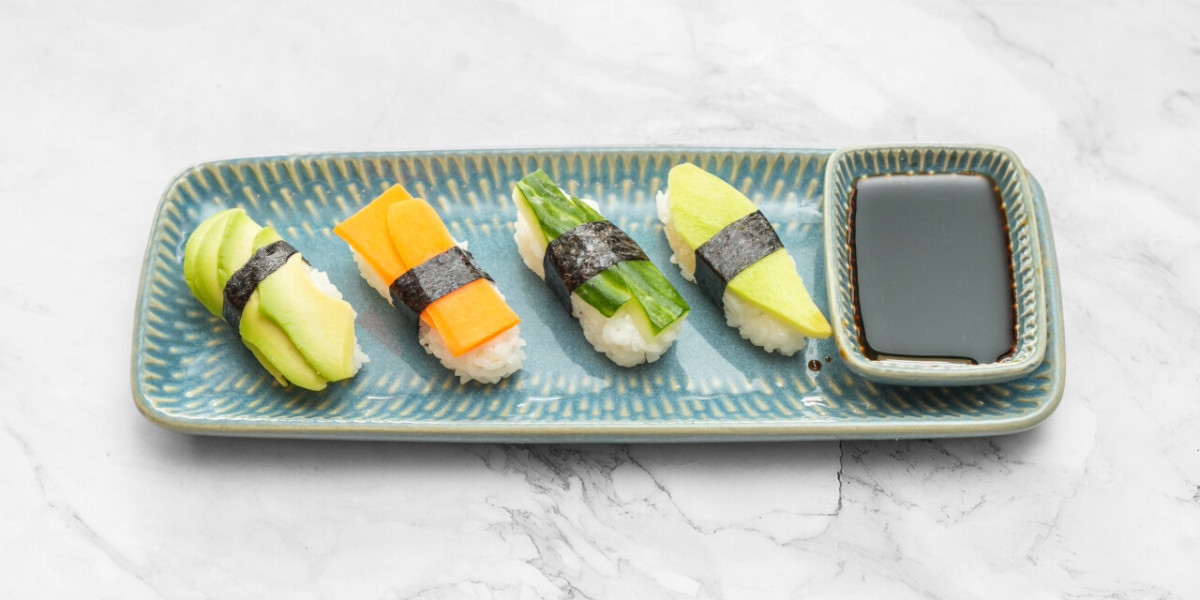24 Selkirk Rd, Ipswich IP4 3HX, United Kingdom
Ipswichwokandbrew@gmail.com

1. History and origins
Sushi originated in Southeast Asia as a method of preserving fish by fermenting it in rice, which was discarded after fermentation.
This practice spread to Japan, where the Japanese began consuming both the fermented fish and rice together, leading to the development of the dish we now call sushi.
During the Edo period in Japan (1603-1867), a chef named Hanaya Yohei is credited with creating nigiri-zushi, the modern style of sushi featuring fresh fish on hand-pressed vinegared rice.
2. Types of sushi
Sushi encompasses a diverse range of styles and presentations, including:
Maki: These are the classic cylindrical sushi rolls made with rice, seaweed (nori), and various fillings, sliced into bite-sized pieces.
Nigiri: Small, oval mounds of sushi rice, hand-pressed and topped with a slice of raw or cooked fish or seafood.
Temaki: Also known as hand rolls, these are cone-shaped sushi rolls filled with rice and other ingredients, meant to be eaten by hand.
Uramaki: Inside-out sushi rolls where the rice is on the outside and the nori and fillings are inside, like the California roll.
Chirashi: "Scattered sushi", served in a bowl with vinegared rice at the base and a variety of toppings scattered on top.
Inari: Sushi rice stuffed into pockets of seasoned deep-fried tofu (aburaage).
Oshizushi: "Pressed sushi", made using a wooden mold to create a rectangular block of sushi that is then sliced.
3. Key ingredients
The fundamental ingredients of sushi are:
Sushi rice: Specially prepared short-grain Japanese rice seasoned with rice vinegar, sugar, and salt.
Nori: Dried seaweed sheets used to wrap sushi rolls.
Fish/seafood: Raw or cooked fish such as salmon, tuna, eel, yellowtail, shrimp, and various roes, as well as imitation crab meat.
Vegetables: Commonly including avocado, cucumber, carrots, pickled daikon radish, and others.
Condiments: Soy sauce, wasabi (Japanese horseradish paste), and pickled ginger (gari) are typically served alongside sushi.
4. Etiquette
There are certain customs and guidelines to enhance the sushi dining experience and show respect:
Chopsticks or hands: While chopsticks are common, it's considered traditional to eat nigiri with your hands.
Soy sauce & wasabi: Avoid mixing wasabi into your soy sauce; dip the fish side of nigiri lightly into soy sauce, not the rice.
Ginger: Eat pickled ginger between pieces of sushi as a palate cleanser, not on top of the sushi.
Single bite: Try to eat each piece of sushi in one bite.
Chefs: Show appreciation for the chef (itamae) and their craft.
5. Health aspects
Sushi can be a healthy choice, especially when featuring lean protein from fish, omega-3 fatty acids, and essential vitamins and minerals from seaweed and vegetables. However, it's important to be aware of potential health risks associated with raw fish, such as parasites, and to consume sushi from reputable sources.
Sushi has become a global sensation, loved for its delicate flavors, artistic presentation, and cultural significance. Whether enjoyed as a fast-food option or a fine dining experience, sushi continues to evolve and adapt to diverse tastes and preferences while remaining deeply rooted in its Japanese heritage.
As a community restaurant, we do our best to make you all happy with all the plates served from our kitchen:- Ipswich Wok and Brew Team ( Chef KIM)

24 Selkirk Rd, Ipswich IP4 3HX, United Kingdom
Tue - Sun : 12:00 PM - 10.00 PM, Monday : Close
GET DIRECTIONS




